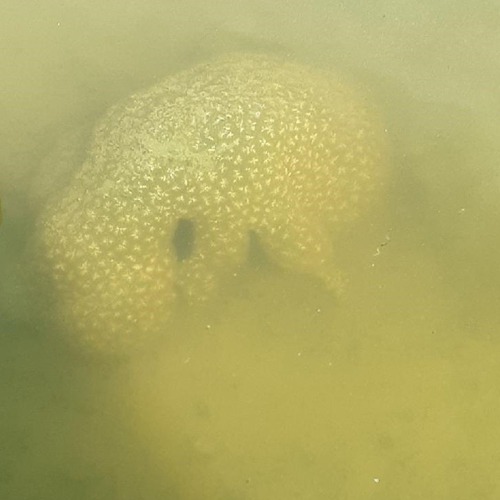What Lies Beneath

By Karen Menard
The mysterious, underwater blob was found in the watery depths of our own Maumee River.
Anchored to a slab of ancient, 400 million year old limestone bedrock, this peculiar, football-sized organism recently took me by surprise as I made my way across the shallow riverbed. Casting its own shadow and appearing as gelatinous as a jellyfish or octopus, it floated and bobbed silently as the water flowed, prompting many questions.
At first I thought maybe a mass of fish eggs, but then looked closer. It really looked like one organism, which was actually identified as a freshwater “magnificent bryozoan” or Pectinatella magnifica. They are actually colonies of filter feeders made up of hundreds of tiny “zooids” that strain the water for microorganisms like algae, protozoa and bacteria using their ciliated tentacles. Ironically, the earliest bryozoan fossil dates back millions of years to around the same timeframe as the actual bedrock it clung to!
Discovering a new find like the magnificent bryozoan, is exciting. Keep in mind that these creatures will not be found thriving in polluted waterways and indicate a clean stream. They also serve as essential parts of the aquatic food chain where colonies can be preyed upon by snails, fish or insects.

Did you know?
Zooids have muscles and a nervous system, and their colony can grow to the size of a basketball. Zooecium is the gelatinous substance or the glue that holds everything together.
Photos:
Top, stock photo
Maumee River photo by Connor McHugh
Video, below: US Fish and Wildlife Service